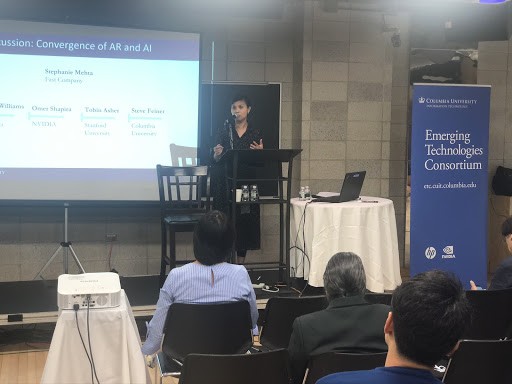Emerging Technologies Colloquium in Extended Reality (XR)

At the second year anniversary of the founding of Emerging Technologies Consortium, ETC debuted the first Emerging Technologies Colloquium! Industry members, students, researchers, and more gathered to discuss the advancements and impacts of augmented reality and virtual reality technologies (AR/VR).

ETC co-founders Parixit Davé and Maneesha Aggarwal kicked off the Colloquium introducing the missions of both the Consortium and the Colloquium: bringing different sides of the tech world together, from researchers to industry leaders, in order to promote the flow of ideas and knowledge across traditionally separate spheres, leading to innovation and forging new partnerships and sponsorships. Including past events, ETC continues to work with Colloquium sponsors HP and Nvidia to connect industry members and the research community through initiatives like the HP Campus of the Future.
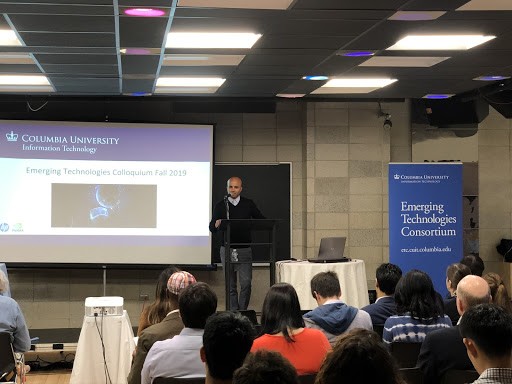
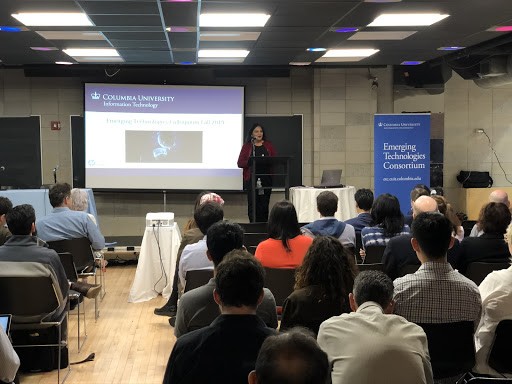
Gaspare LoDuca, CUIT VP and CIO, highlighted CUIT’s unique position as a department in bridging that gap during his keynote speech: by utilizing CUIT’s unique vendor-partner relationship, ETC is able to connect industry members with the Columbia community. A dialogue is established, and researchers are able to find industry tech solutions for their particular problems. Furthermore, LoDuca explained that events such as the Colloquium are designed to educate the general community on rapidly advancing technologies, de-mystifying the mythology of “futuristic” tech and clarifying its real-life capabilities.
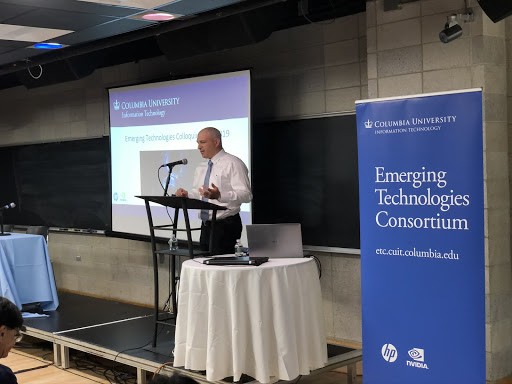
Steve K. Feiner, director of the Columbia Computer Graphics and User Interfaces Lab, gave an introduction to the uses and history of extended reality. Both AR and VR are components of extended reality but have different manifestations. While VR creates a completely computer generated world tracked to the viewer, AR augments the perceptible world by adding computer-generated elements through various techniques. There are three such display techniques for AR:
1. Optical see-through display: the viewer sees the real world by perceiving it through a combination of mirrors and lenses.
2. Video see-through display: the computer combines graphics with a real-time camera view of the world.
3. Projection display: virtual graphics are projected into a real-world environment. An example of this would be a powerpoint presentation, which augments a blank screen with the projected slides.
Furthermore, contrary to popular belief, AR and VR have been around for over 50 years and was introduced in the same conference that the mouse, hypertext, and video-audio integration were introduced. However, Professor Feiner explained, it only gained popularity in the past decade due to its commodification and availability of cheaper production for public use. Originally, the ideal AR/VR display, known as “The Ultimate Display,” would be a full sensory immersion, similar to the holodeck in TV series Star Trek, where the user enters a lifelike simulation indistinguishable from the real world.
While this Ultimate Display is still unavailable to use currently, Professor Feiner introduced several current uses of AR/VR:
1. Remote Task Assistance: a remote expert performs an operation, which is tracked and projected to an on-site specialist, who can then perform the specified task with the guidance of the expert projected using AR.
2. Urban Visualization: see different locations in a city (e.g. NYC) and have flags with an information display pop up when selected via laser pointer.
3. Collaborative Motor Rehabilitation: connecting physical therapists and patients who use VR headsets and two handheld controllers to gain control over balancing a ball on a board in a virtual environment
4. Hands-Free AR for Vascular Interventions: an AR projection of the heart is seen through a headset, leaving the hands free to operate. The projection can be rotated or moved using speech and head motions.
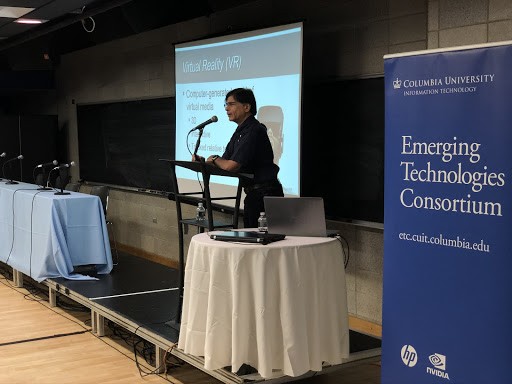
Participants were also able to try out many of the AR/VR products and network directly with industry representatives at the Startup Alley. Products and research were featured from organizations including OmniSci, Speak it Yourself, the Fashion Institute of Technology, and D6 VR.
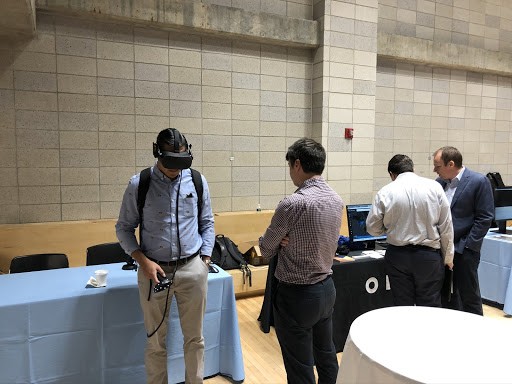
Another highlight of the Colloquium was a panel discussing the convergence of AI and extended reality. The panelists ranged included members from various backgrounds, including both research and industry: Steve K. Feiner from Columbia University, Tobin Asher from Stanford University's Virtual Human Interaction Lab, Aaron Williams from OmniSci, and Omer Shapira from Nvidia. They discussed the necessary and inevitable convergence of artificial intelligence with extended reality, as well as the implications of data gathering and resources and uses of big data.
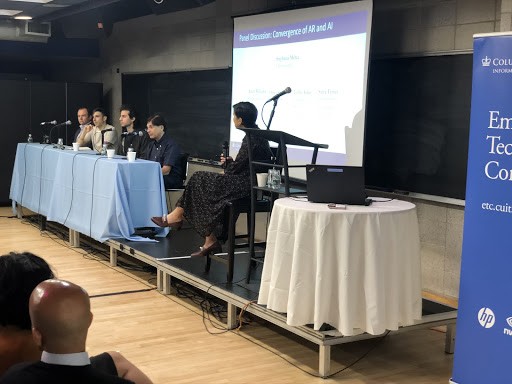
To conclude the Colloquium, Fast Company’s Stephanie Mehta presented on how to expand how to expand creative boundaries and foster innovation. Ms. Mehta shared four methods for unlocking creativity:
1. Getting out of your comfort zone: trying new and uncomfortable activities makes you engage in different ways, leading to fresh perspectives.
2. Focusing the Mind: in the tradition of creative giants like Jeff Bezos and Steve Jobs, getting into habits such as meditation can help relax and clear out the mind to promote clearer thinking.
3. “Unleash your inner Shakespeare”: apply a creative approach to mundane tasks, which helps to view the world from a different perspective. For example, Jeff Bezos makes top Amazon executives write memos in the form of a creative essay, which many have testified to help them frame their ideas with more clarity.
4. Stop, collaborate, and listen: breaking silos between different disciplines allows for greater growth, combining a passion for problem-solving to create innovative, creative, and effective solutions.
